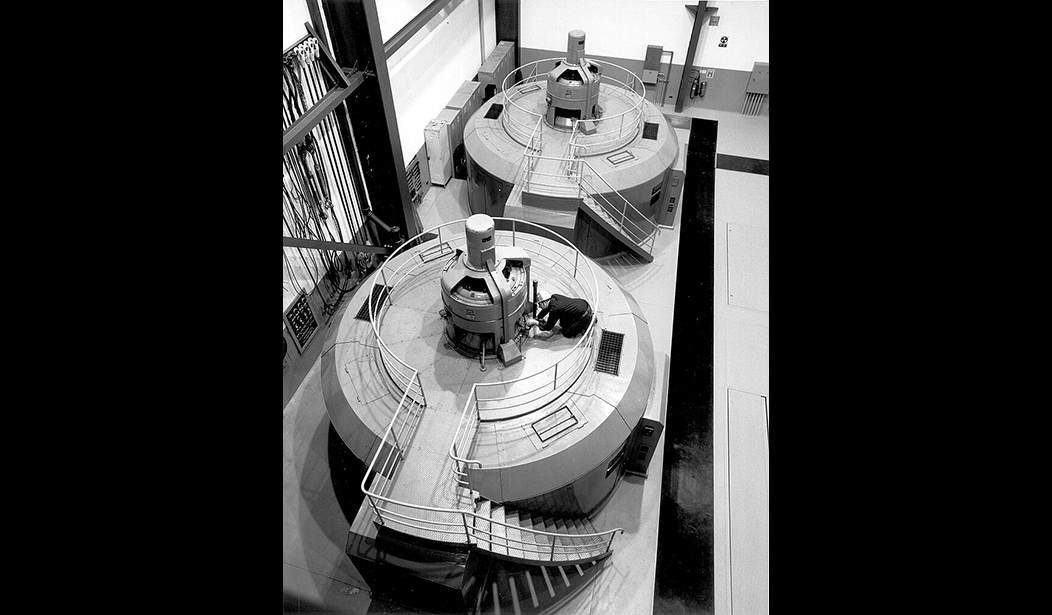About 30 miles northeast of Anchorage is the Eklutna Dam. The dam supports a 47 MW power plant that provides about six percent of south-central Alaska's electricity; the lake behind the dam, where the Eklutna River flows into the reservoir, provides about 90 percent of the drinking water for the city of Anchorage. The dam's 1991 agreements dealing with the fisheries and wildlife in the area are up for renewal, and a group of activists are using this opportunity to campaign to have the dam and its power plant removed altogether.
This is almost California-level nonsense.
A group of environmental organizations, collaborating with the Native Village of Eklutna, have called for the removal of the dam, to potentially revitalize a salmon run that the collective believes has been harmed by the dam’s presence.
Currently, 6% of the overall power generated by Chugach and Matanuska Electric comes from the Eklutna hydroelectric project. Along with that generation, nearly 90% of Anchorage’s drinking water also comes from the lake and associated flow from the project, making the project a critically important piece of infrastructure.
The owners – Chugach Electric, Matanuska Electric and the Municipality of Anchorage – have been engaged on a renewal of a 1991 agreement dealing with fish and wildlife management associated with the project. After spending nearly four years studying various mitigation plans – and engaging with both required and additional stakeholders impacted by the dam’s presence – they have developed a draft plan that lays out a compromise among competing proposals and a solid path forward; best suited to meet all the requirements of the original agreement.
But that's not enough for the activist groups. They want the dam removed — and make no bones about it — regardless of the cost, not to mention the impact on Alaska's energy picture and certainly not to mention the city of Anchorage's water supply. Granted, if there's one thing Alaska has a lot of, it's water, but consider the likely cost of replacing 90 percent of the water supply of a city of 300,000 people.
Environmental activists never seem to consider the human impacts of the actions they agitate for.
But, even after all the consultation with the environmentalists and others, the collective wants the dam removed, with little concern over the impacts to power, water or costs.
The owners are holding a series of public meetings to get input on the draft plan. For all our readers and followers in Southcentral Alaska, please make plans to attend one or more of them.
Soon, a final draft will go to Gov. Mike Dunleavy, whose administration will make the final call on how to move forward.
This is, yes, a local issue and many of you outside of Alaska may never have heard of the Eklutna River or the Eklutna Dam until now. But this is one facet of an issue with national implications.
See Related: 'Stop Doom-Mongering': WaPo Climate Alarmist Ridiculously Claims House Plants Are Bad for the Planet
Alaska Joins 20 States Suing Biden Administration Over Highway Emissions Rules
Here's the great irony: Hydroelectric power is efficient, it is reliable, and it is clean. Environmental activists and climate-change doomsayers are constantly going on about carbon emissions; hydroelectric plants emit, essentially, zero carbon. When it comes to carbon, it just doesn't get any better than hydroelectric. Eklutna Dam's owners, Chugach Electric, Matanuska Electric, and the city of Anchorage, seem to have absorbed this information, even if the activist groups have not.
Local issues are frequently microcosms of larger issues. As with so many energy projects all over the United States, the people agitating for the removal of the Eklutna Dam are exercising Californiaism, campaigning for "green" issues above all else, regardless of the cost. Three questions must be put to and answered by these activists, but the legacy media never seems to ask them:
- At what cost, in taxpayer dollars and lost energy production?
- Who is paying that cost?
- What evidence is there that removing the dam will result in any net gain for the citizenry of Anchorage and south-central Alaska?
I suspect I know what the answers would be.
You can see details of the project and the draft proposals here.













